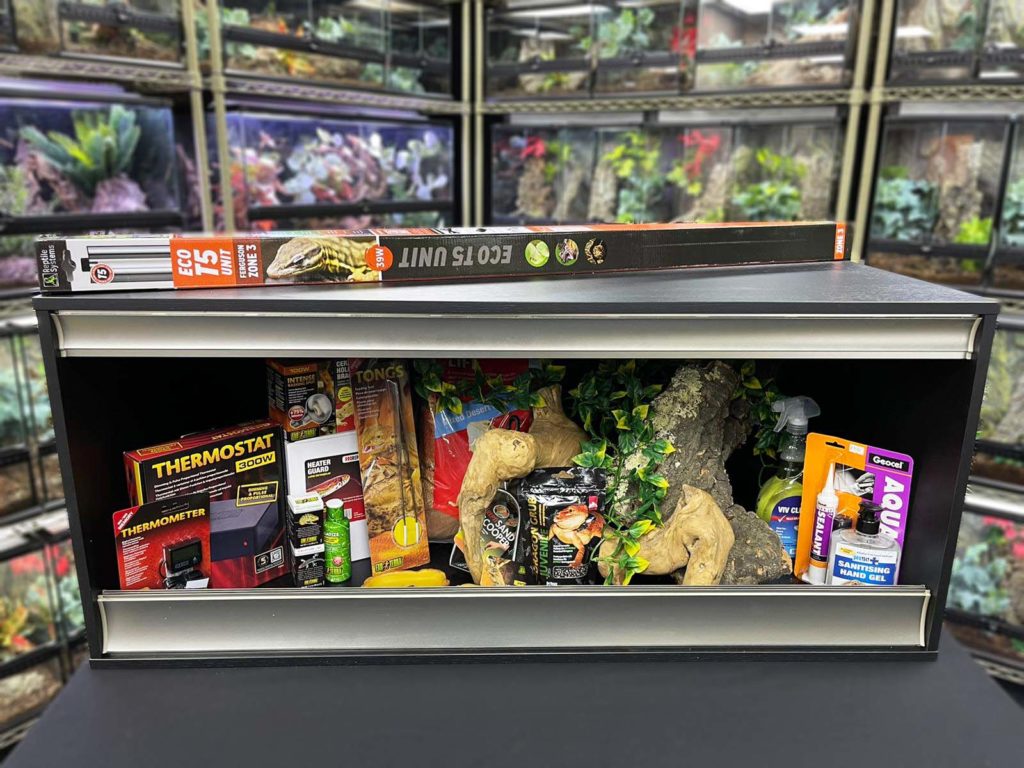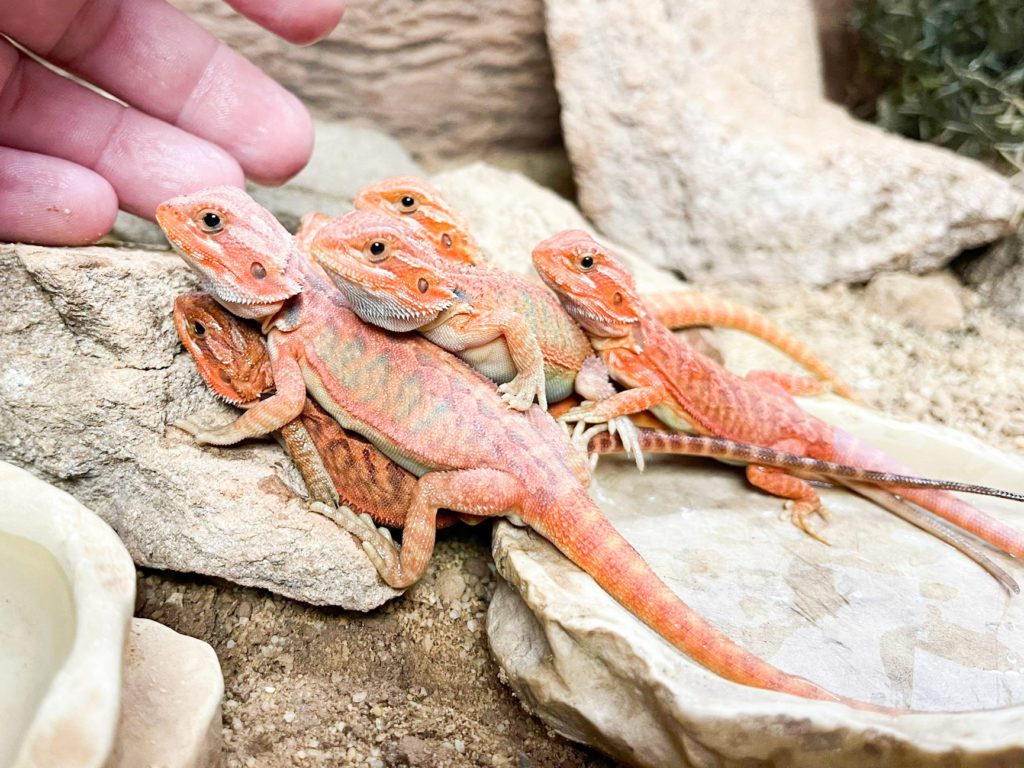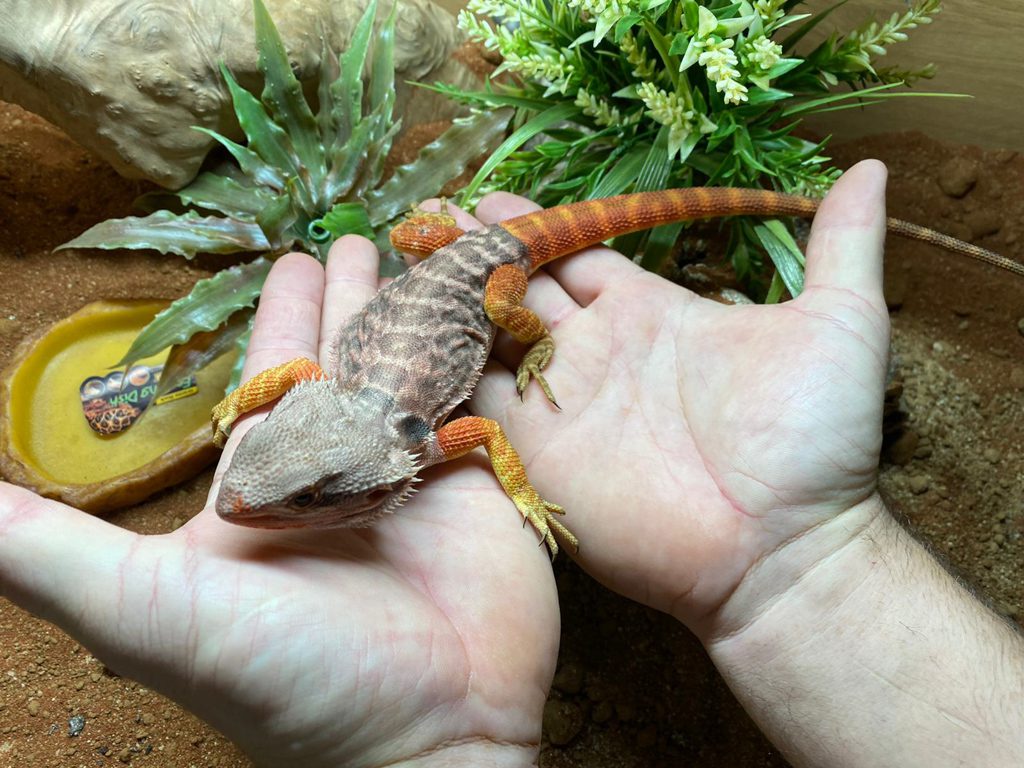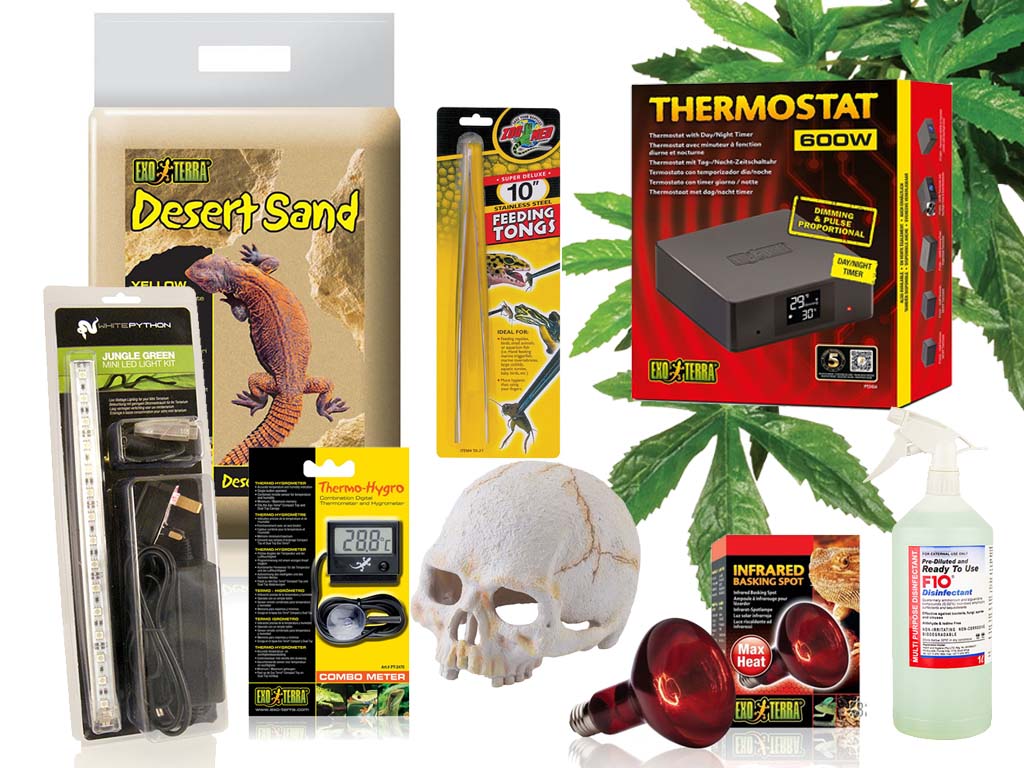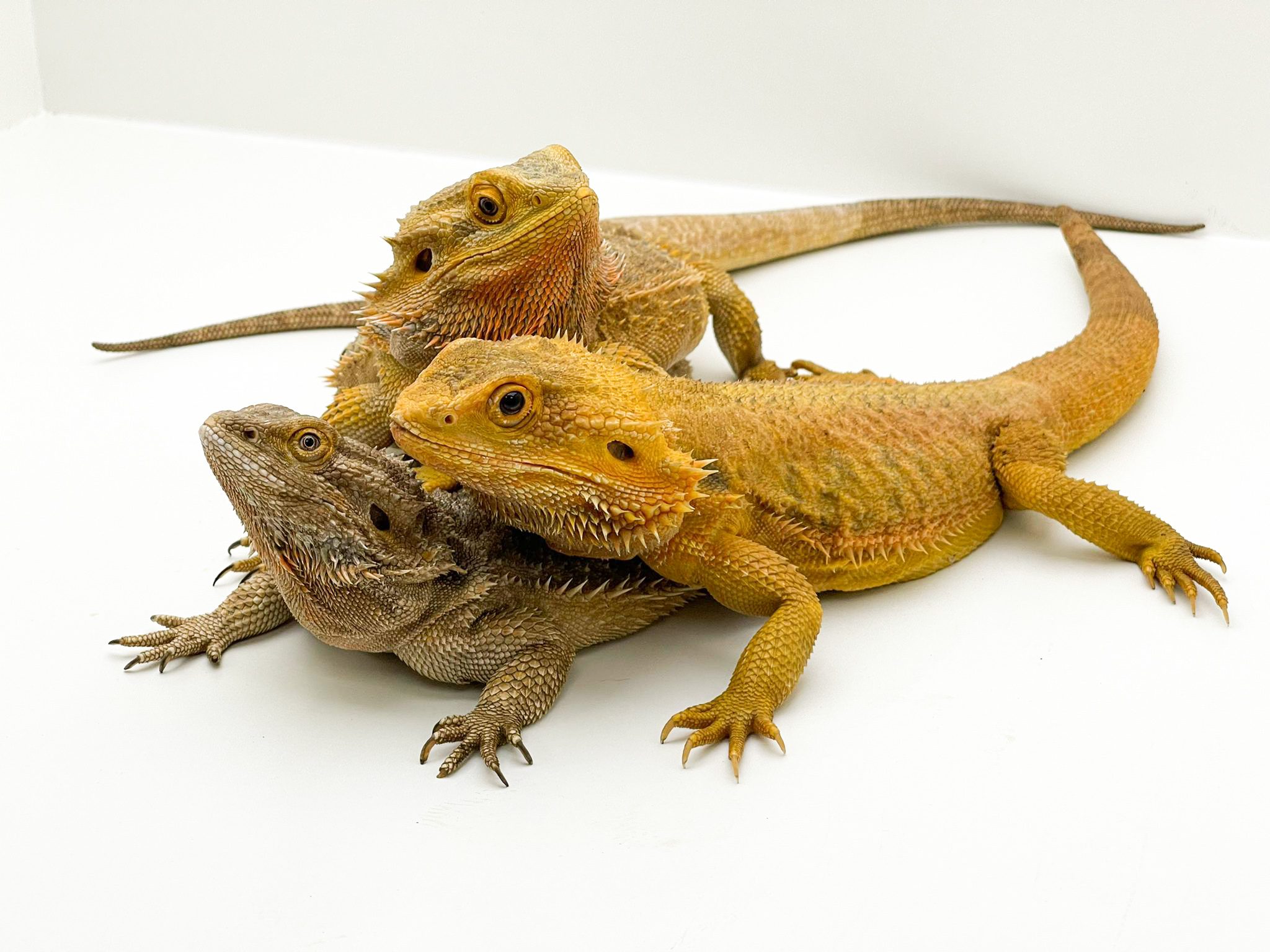
Bearded Dragon
Care Sheet
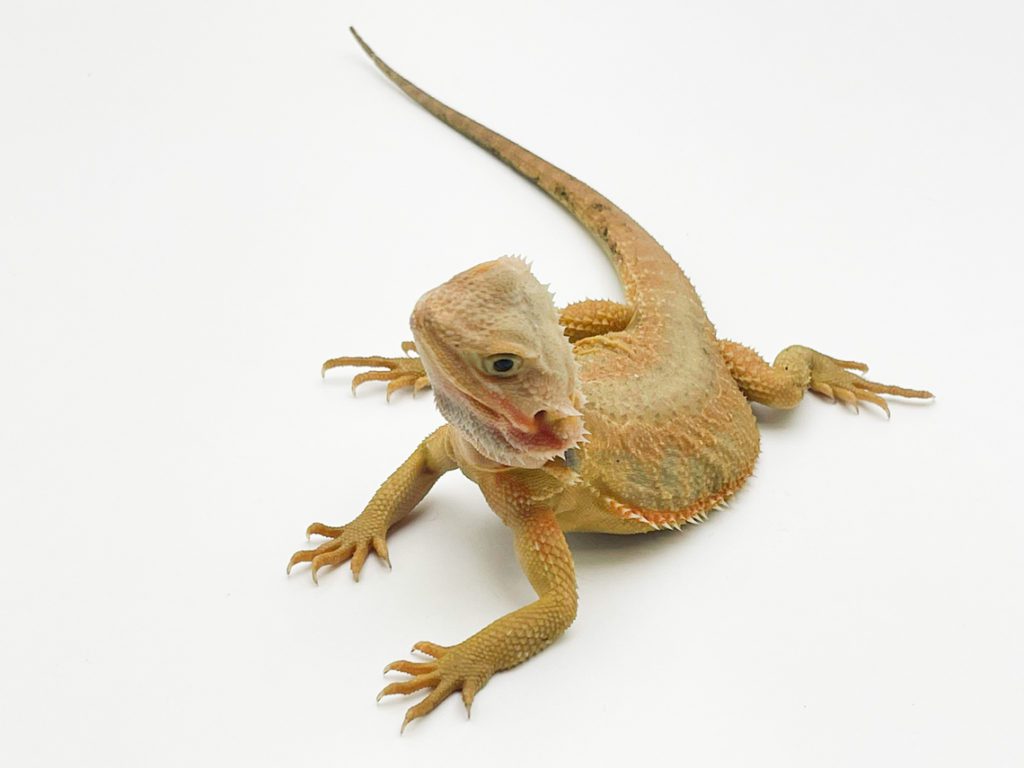
Bearded dragons are a medium sized lizard originating in Australia. They are generally very tame lizards who enjoy human interaction
Bearded dragons are very fertile breeders and the females can lay around 30 eggs several times a year. They breed so many due to their likeliness to get eaten by predators in the wild
Bearded dragons come in many colours and patterns known as ‘morphs’. Some of the morphs even change the amount and size of the scales which a dragon has. There are now many designer morphs which create full white, black and grey dragons
Bearded dragons are one of the most popular pets due to their friendly attitude. They do live a long time, and sadly dragons are one of the most re-homed species. We advise that customers consider how they will provide for a full life of care for their dragon before purchasing
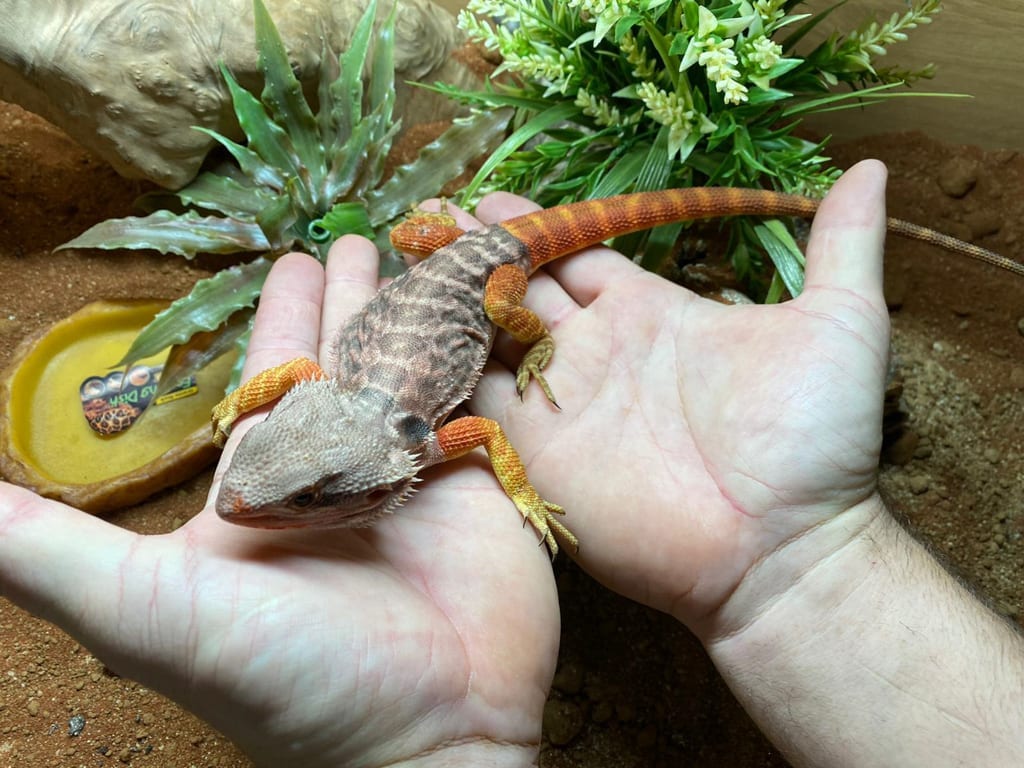

HANDLING YOUR DRAGON
Bearded dragons are known to be one of the tamest species of lizard available on the market. However, we should treat all animals gently, especially with a new pet. We recommend you handle your dragon inside the enclosure if small to avoid it from running away if it runs out of your hand. Once the dragon is used to you and you have a routine established, you can begin bringing the dragon out. We recommend handling your dragon 2-3 times a week at the same time. Due to their need for high temperatures, we recommend keeping a dragon out of its enclosure for a maximum of 30 minutes.
Try not to handle your dragon when it is full of food as this can be uncomfortable for your dragon and it may poo on you. Dragons love a bath, this can be a great opportunity for bonding between pet and owner.
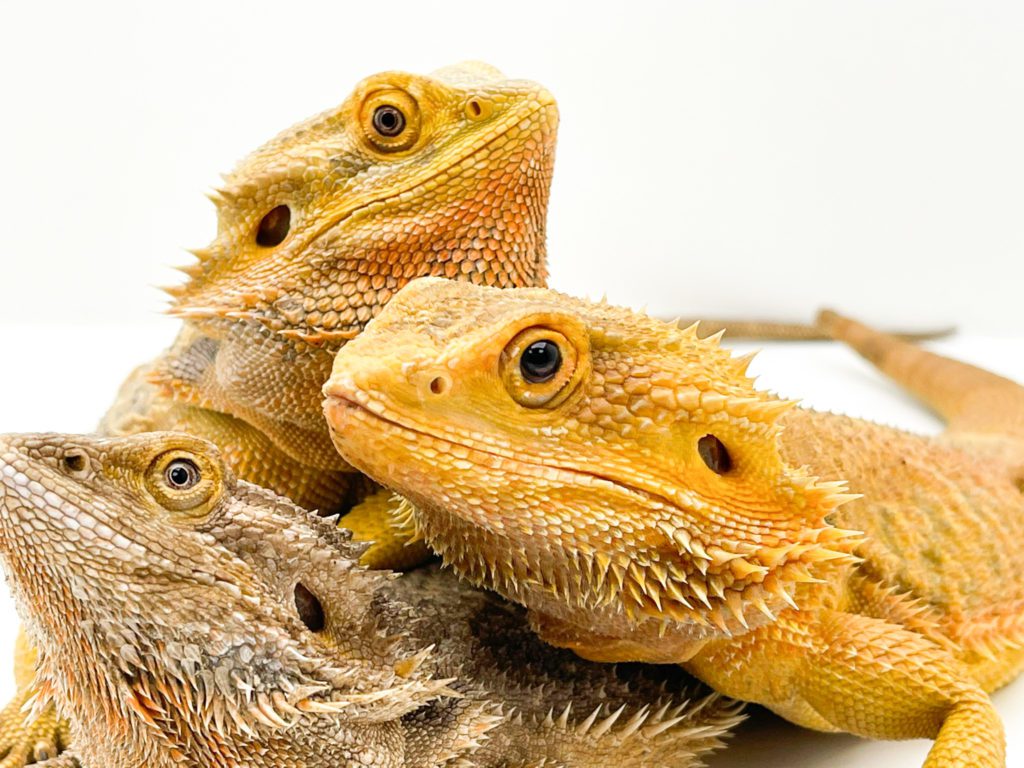

SEXING YOUR DRAGON
Bearded dragons can be hard to sex for the first 3 –6 months until their genitals grow and become visual.
Like many lizards, dragons can be sexed by looking between their legs. Males will have large waxy pores in a V shape and presence of the hemipenes can usually be seen at the bottom of the tail behind the vent.
Gently secure your dragon and turn upside down to see between the back legs. Female bearded dragons also display pores meaning that it can be difficult to sex your dragon until it is larger and the pores become more visible. Take care not to grab the tail when sexing your dragon.
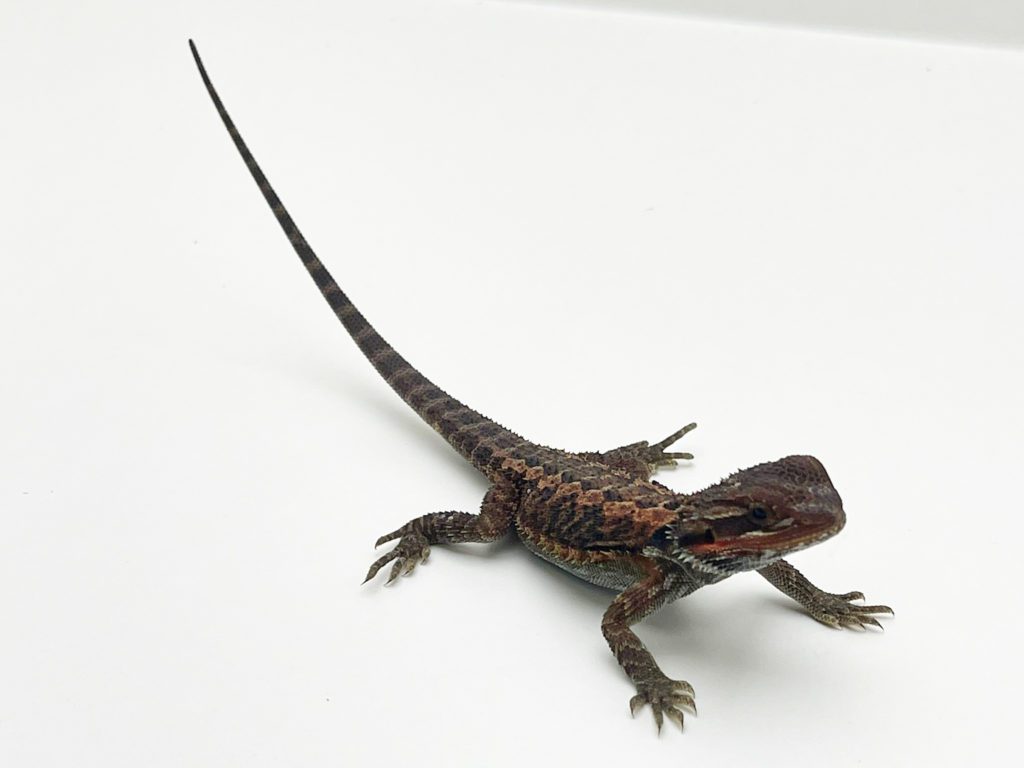

HEALTH CHECK
Eyes- Eyes are clear with no sign of puss, inflammation or milky appearance. Eyes are free of black spots in corners which could signify mites.
Skin- The skin is clear of shed and there are no cuts or scrapes on the lizards skin. Occasionally locusts or crickets can nip the skin of the lizard. Always remove live food that is not eaten after the lizards meal to prevent further bites and stress which can stop your lizard eating.
Limbs- All the limbs are moving correctly and the lizard is able to walk and move normally. Lizards can suffer from a condition called MBD (metabolic bone disease). This occurs when lizards do not have enough calcium D3 and causes their bones to grow abnormally, eventually restricting their movements. MBD cannot be reversed so always dust livefood with calcium twice a week to avoid MBD occurring.
Weight- Many lizards in captivity are overweight which is generally a result of the lizard being fed on worms alone or fed too often. Feed your lizards a mixed diet of locusts, crickets, roaches, mealworms and pinkie mice to adults as a treat..








ADVICE FOR LIFE!
When you buy your Pet & Housing from us!
Priority Boarding | Advice available face to face, via Telephone, Facebook Chat, Email, Instagram

